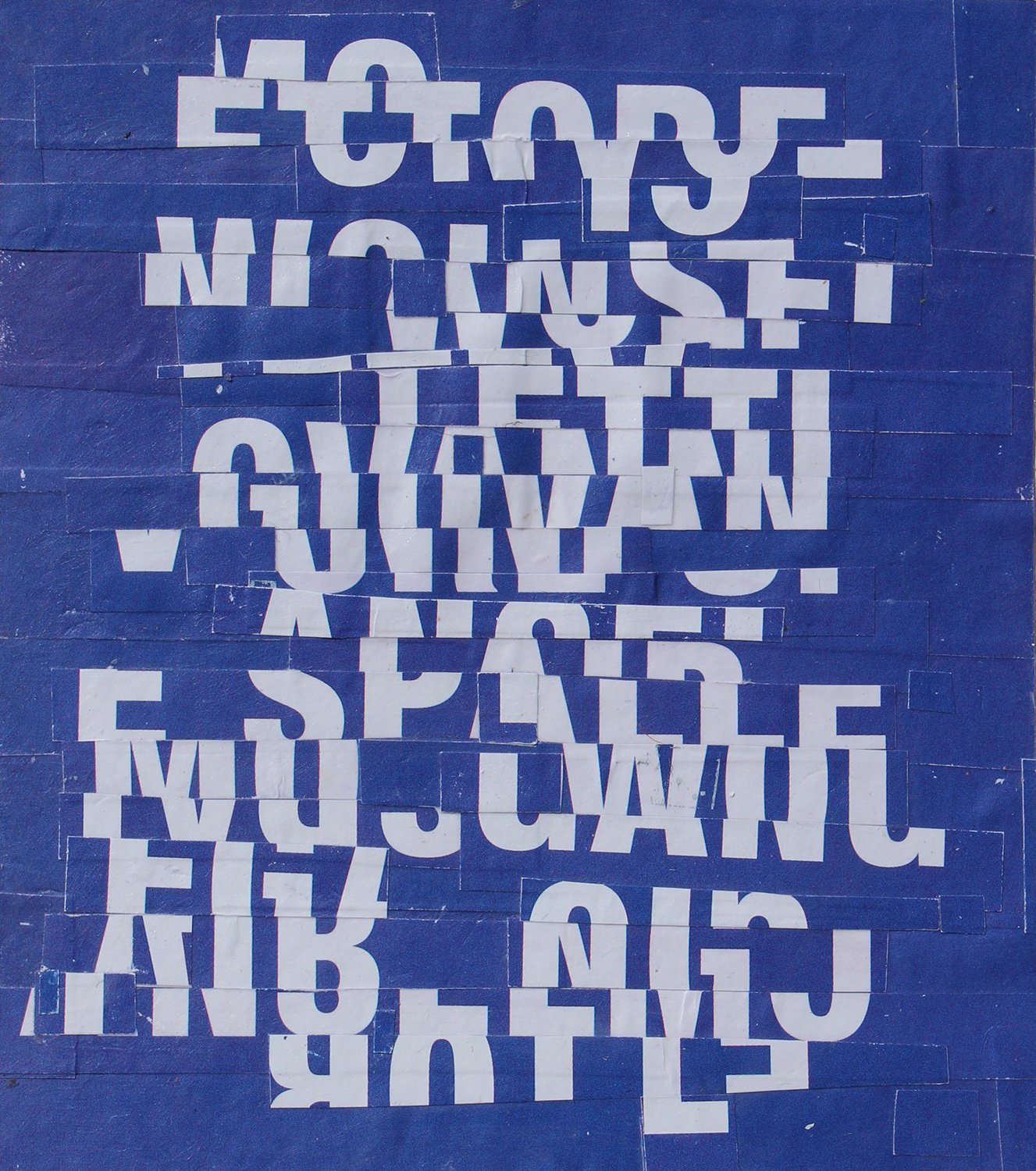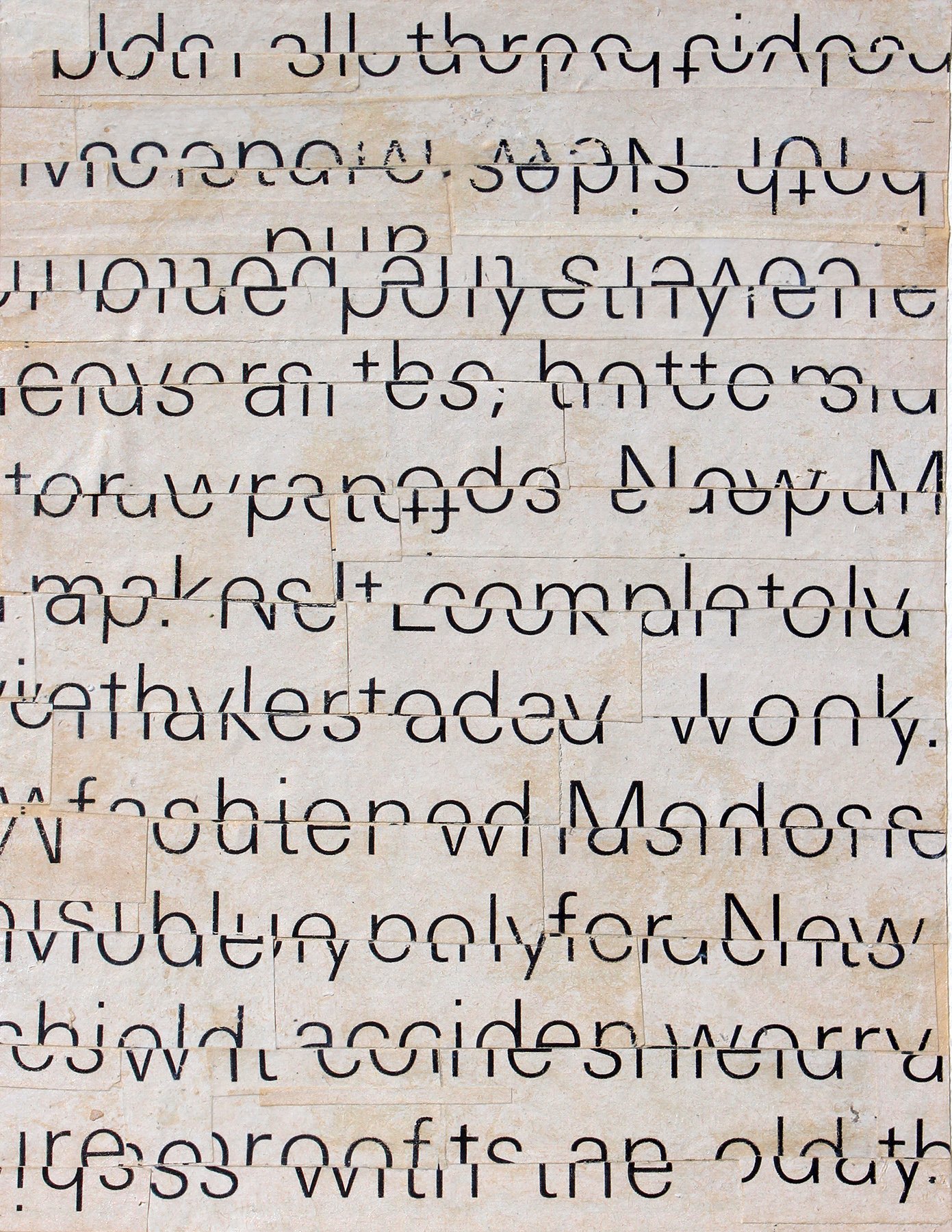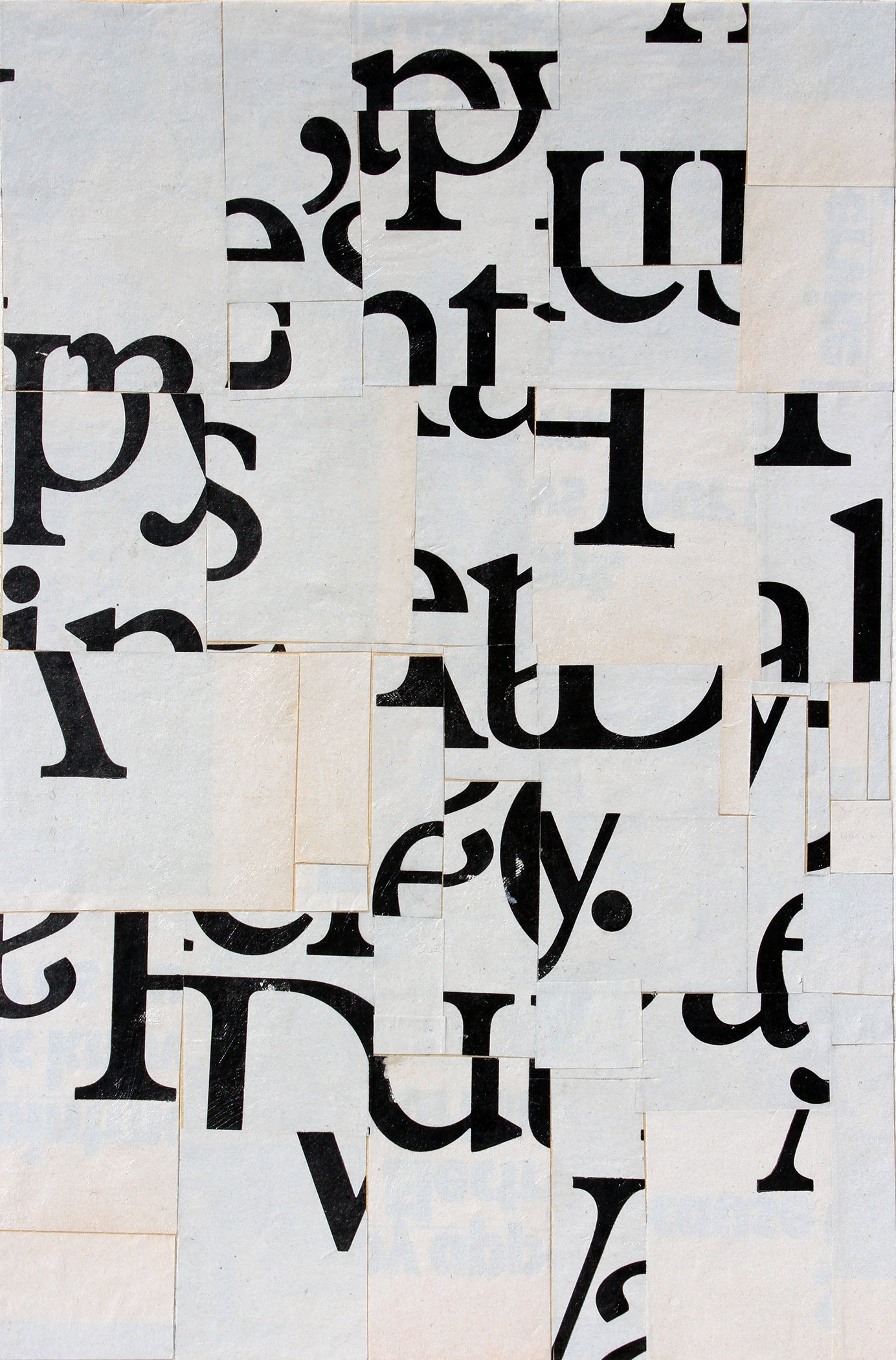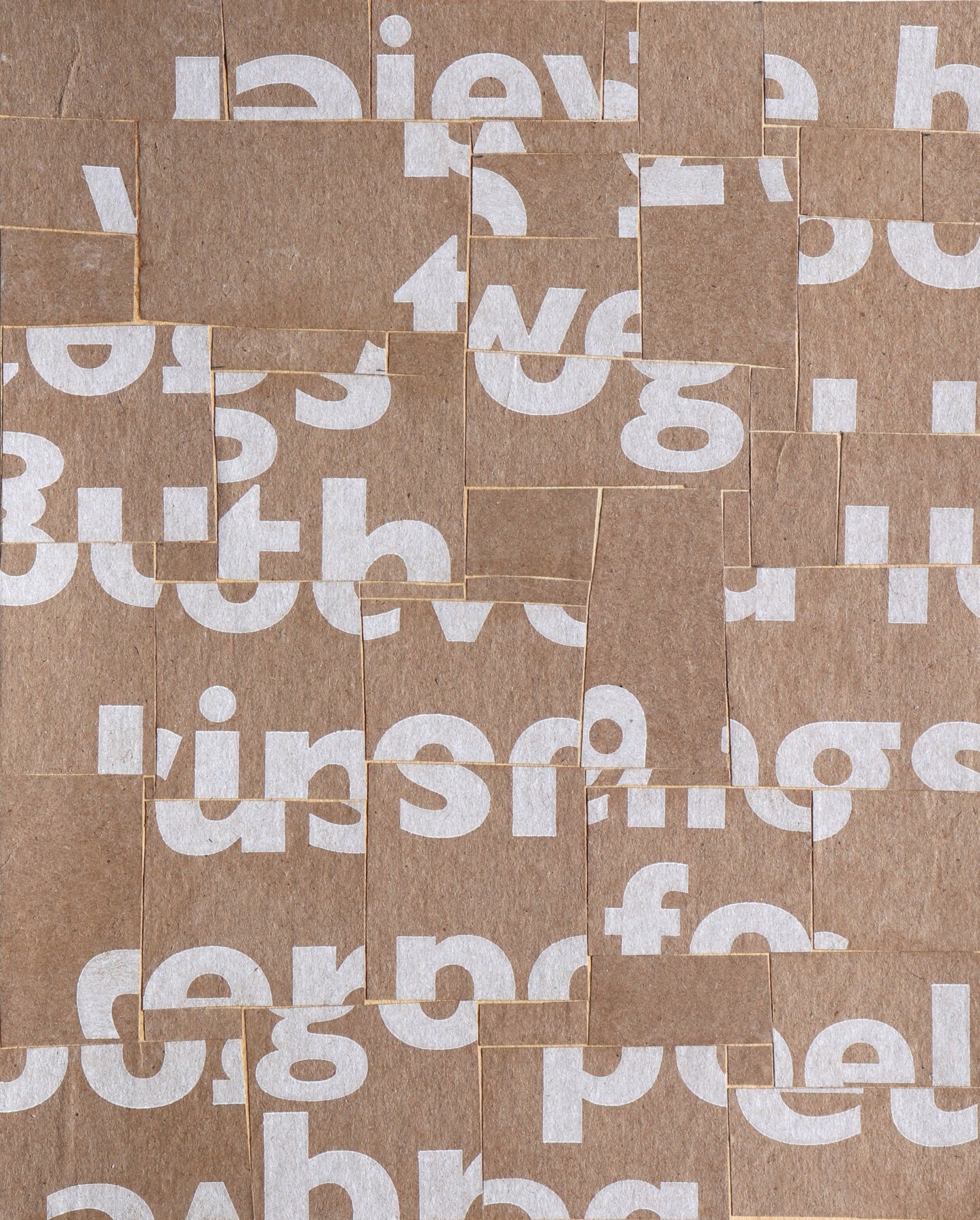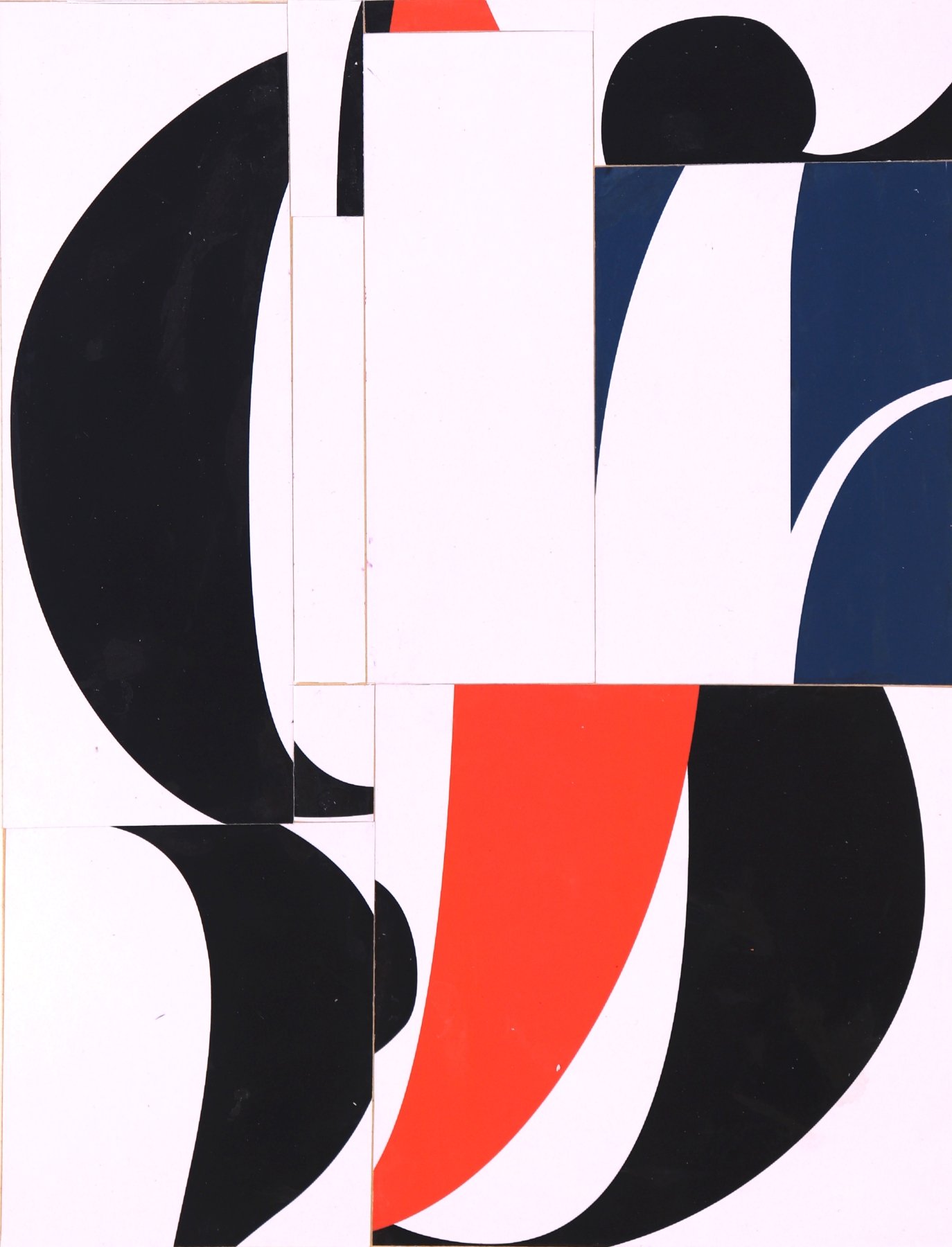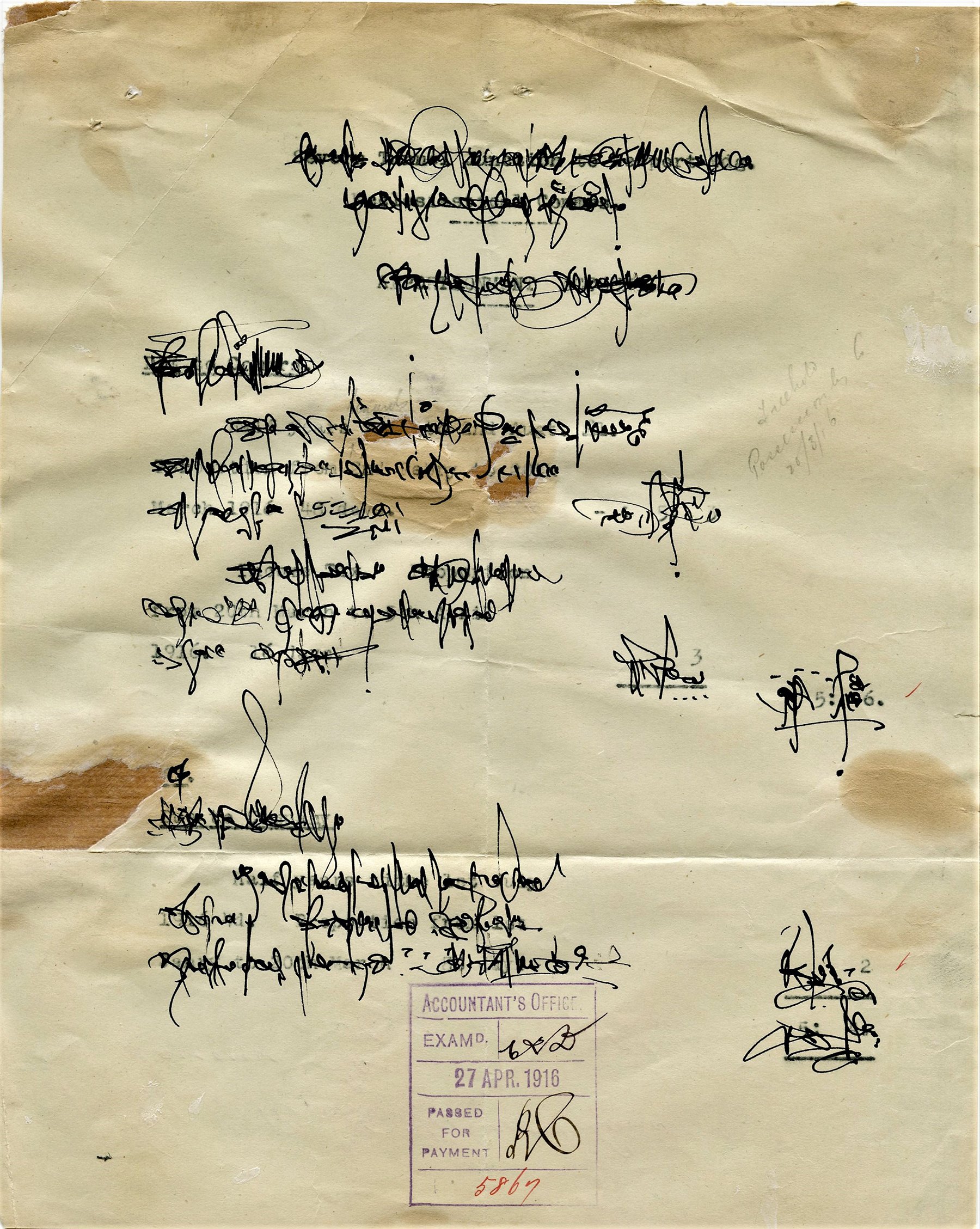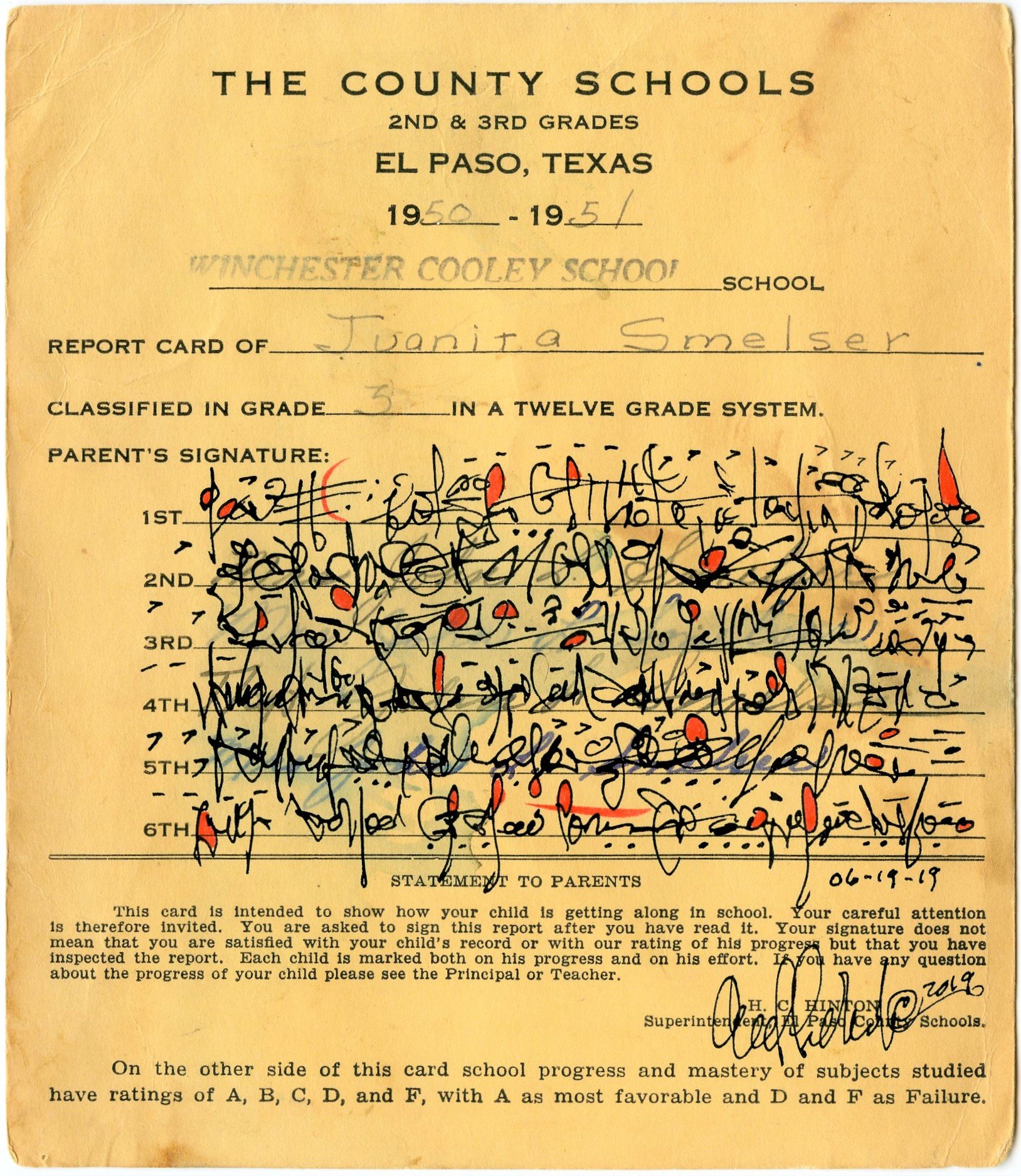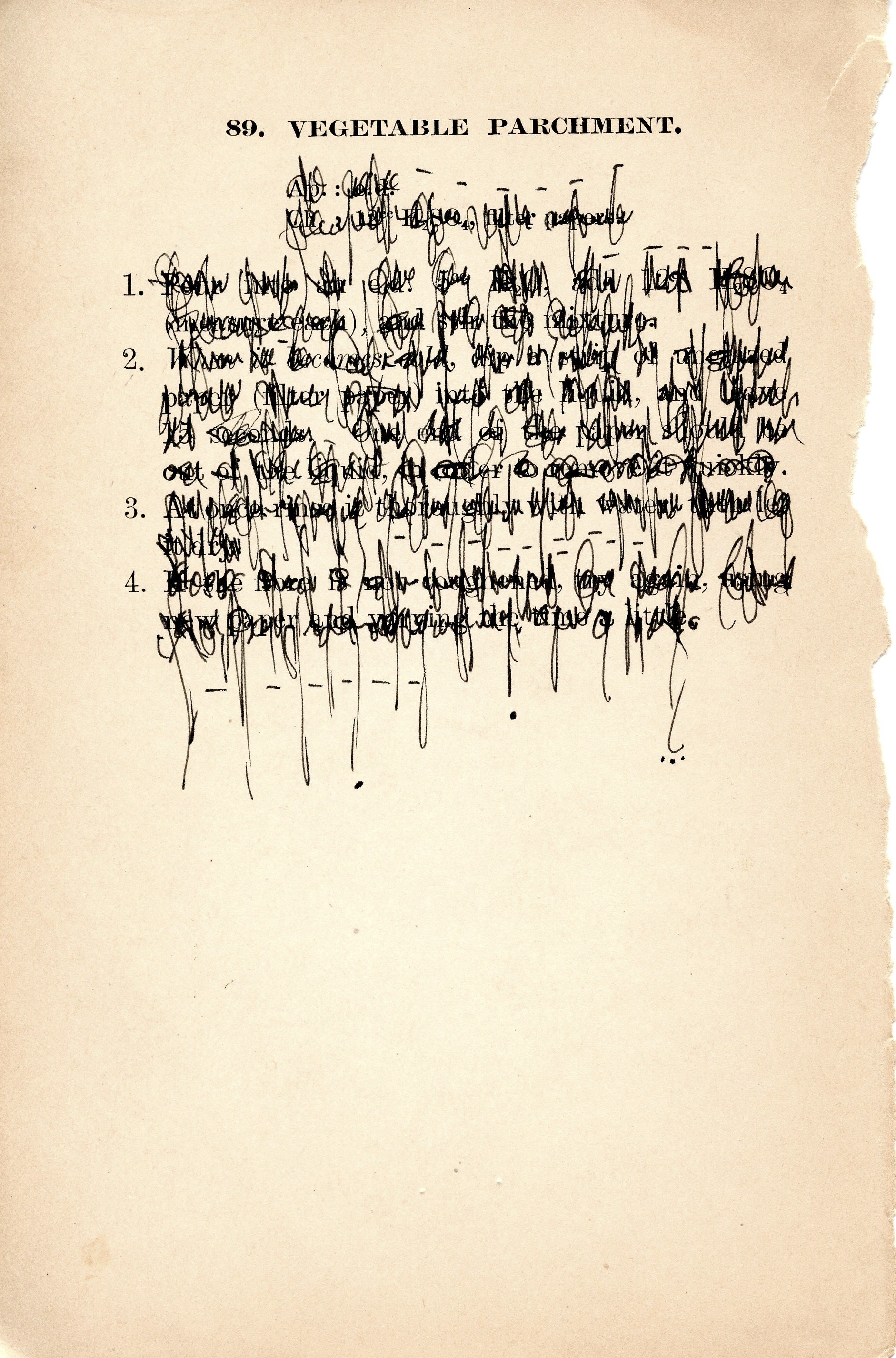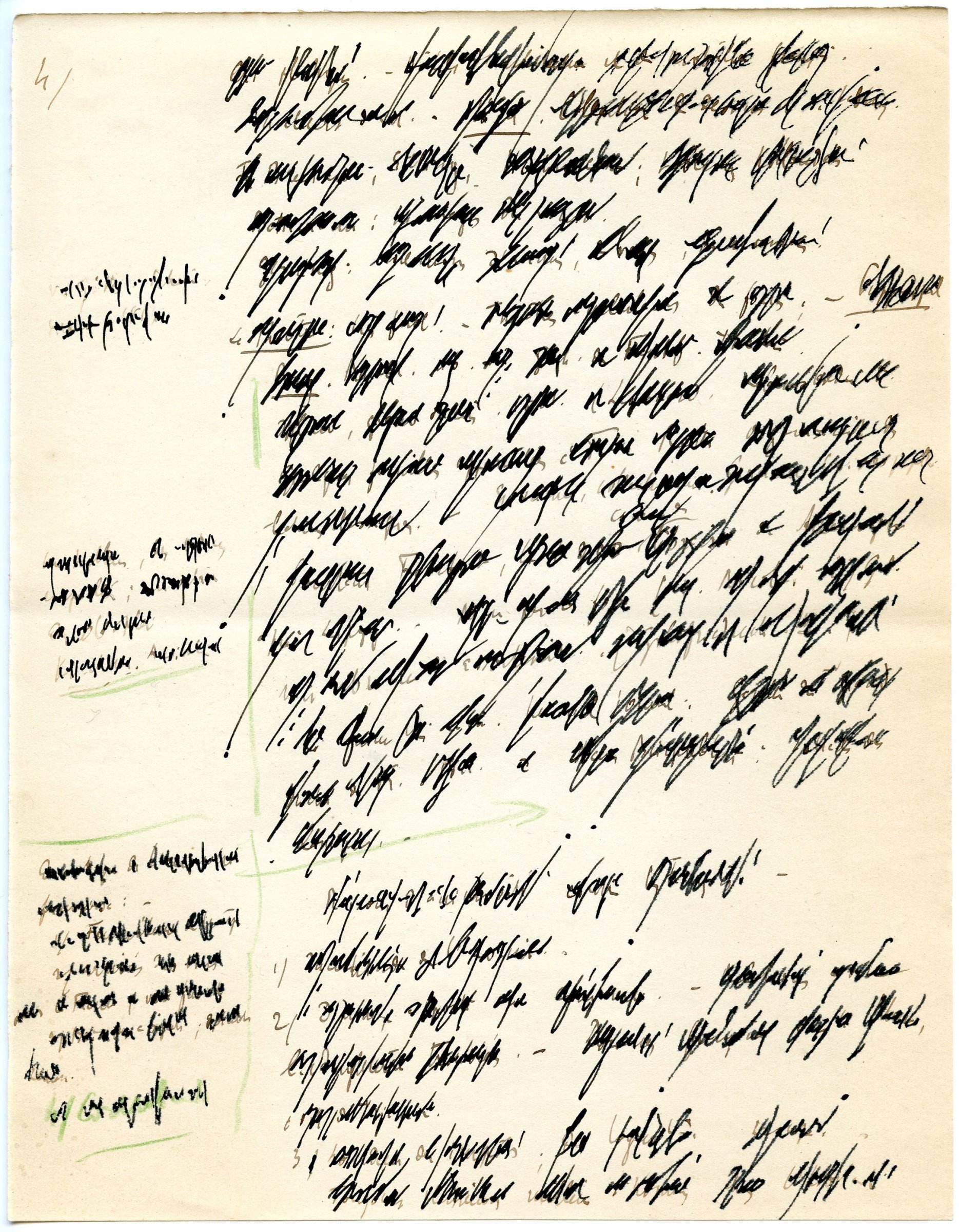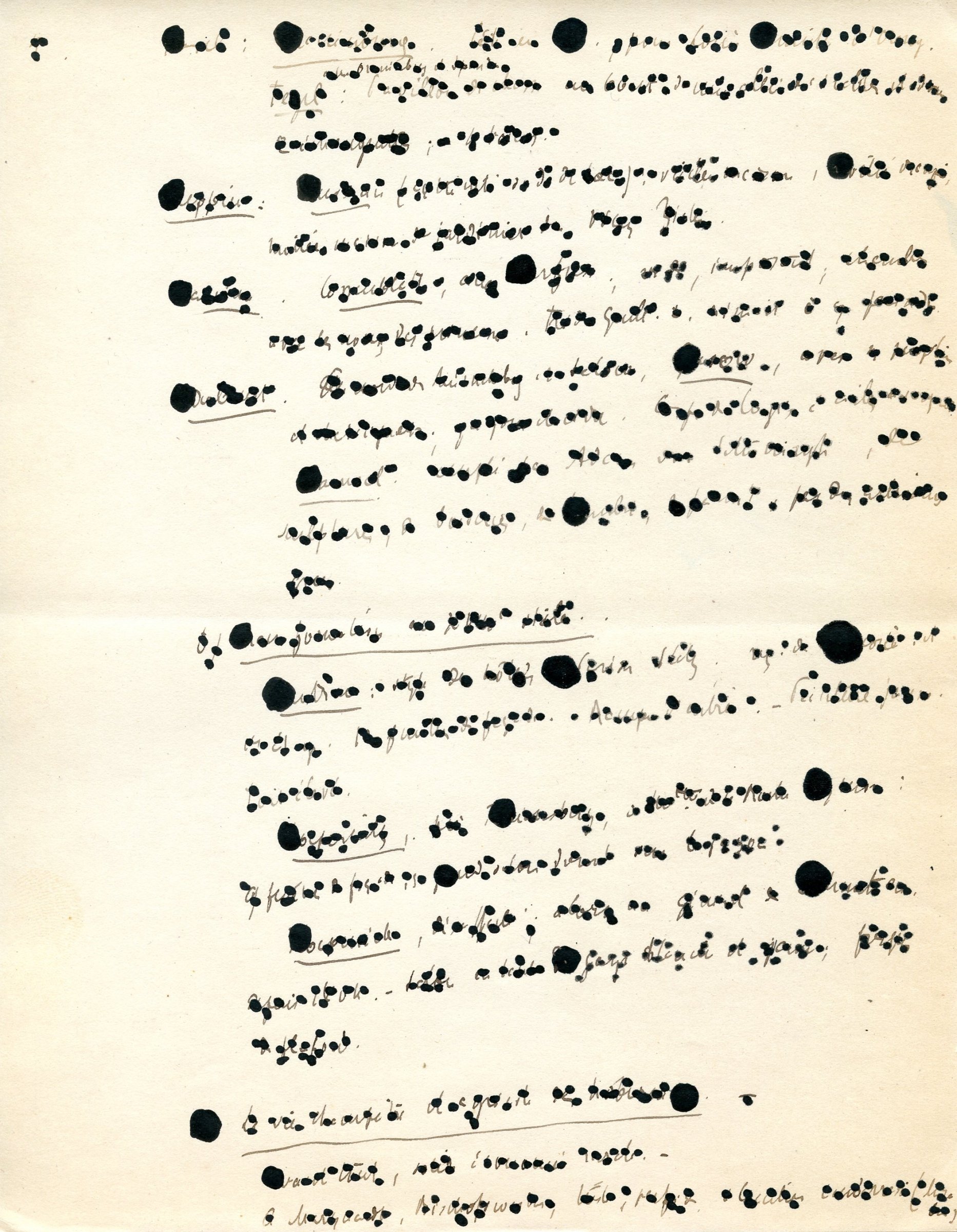Spotlight
Cecil Touchon
Cecil Touchon is a painter, performance artist, collector, draftsman, photographer, publisher and curator. But it is through his collage work that he has made his most lasting mark. His collages are the seeds that grow into his other practices.
Touchon's paintings are abstractions based upon typography. Using the techniques of collage, he reassembles portions of letter fonts from billboards and printed material into pure abstractions that transform verbal language into a form of visual architecture.
His paintings use trompe l'oeil techniques to painstakingly create the illusion of large collage abstractions. They are characterized by warmly colored geometric shapes — overlapping rectangles and rounded wedges - that seem to revolve and recede into the background. The resulting works are a play of lightness and mass that are both visually striking and, because of the hints of letters, intellectually satisfying.
Cecil Touchon was born in Austin, Texas (1956). His artistic inspiration was ignited early and explored throughout his childhood and into his young adulthood. He received his BFA from the University of Texas at Arlington. Throughout his career, which spans over 40 years, Touchon has been collected worldwide and figures prominently in the Massurrealism movement. Touchon is a founding member of the 1987 Post-Dogmatist Group and director of the Ontological Museum - the group's archives - as well as a respected member of the Art Mail, Asemic Writing and Fluxus communities. Touchon's work can be found in many private, corporate and international collections and archives.
What inspires you to create asemic texts?
As a child I spent nine years in Catholic private school. That is probably inspiration enough for the expressing of oneself in a cryptic, unknown and unknowable manner. Who wants to get burned at the stake after all, based on the misunderstandings of the ignorant and the institutional. I am joking really but still... Growing up in that environment did give me an interest in illuminated texts which fascinated me greatly and the idea that sacred writings were so precious that monk/scribes spent their lives creating, illustrating and copying books by hand.
Writing and reading and knowledge gathering and preserving are odd peculiarities of humans. I am fascinated by the idea of language and yet highly suspicious of its use and misuse, its ability to inform, inspire, share, comfort and guide and yet control, misdirect, shame, manipulate, cajole.
As a visual artist I see a gulf between what cannot be spoken or goes unspoken and the world of language. Poets are constantly confronting this boundary. So, I think my own response as a collage artist is to deconstruct existing texts and reconstruct them into silent abstractions, creating texts that do not carry messages so that the remainder can exist as a universalised statement, a pattern, a design, a physical remnant or artifact of human communication without the oppression of carried meanings.
When we look at texts we normally do not see them, we just hear or see the message that is embedded in the text and the text itself all but falls away and only the message remains in our minds. The letters of language are like beasts of burden, they are tethered together to become words and sentences to bare meaning on their backs. It is a thankless job, like so many employees whose time and attention is purchased for bearing the load of someone else's corporate dreams and aspirations. In one way it is kind of wonderful and amazing, in another way it is kind of sad. It depends on how you think about it.
As far as asemic writing, which comes out of a mark making tradition, (as compared to collage making), I am focused on the 'body language' of writing and the organization of the writing. I have come to think of it like a musician practicing on a musical instrument except there is a recording in marks on paper. I watch my mind and impulses while writing like a form of active meditation. I am always looking for flow and new abstract vocabulary. Sometimes I am just experimenting with different drawing tools or liquids to see what they will do and how they make marks. It is continuel exploration to see what can happen.
Why make asemic works in the first place? That's a question I sometimes ask myself. Why do I do this? Why is there a whole community of people doing this all over the world? I have some vague speculations but no definitive answers. It is a mystery really. I think possibly it is a transitional response as we shift from a literate to a post literate culture. Or perhaps it is a continuation in the development of abstract art spreading into language, the last vestige of representationalism except maybe for film. Maybe it is some sort of Surrealistic virus. Maybe it is a response to the humbling realization that the universe, the world we find ourselves in and human culture at large is much more complex and nuanced than we can possibly imagine, leaving us all speechless.
What is the one thing you would like readers to gain, to understand, about your work, the breadth of asemic writing and the work you have undertaken?
Hum... The one thing... What might that be? Considering the readership, I would guess we are all poets, or aspiring poets. As an artist and poet, I am usually thinking of, watching and listening to other artists and poets and contemporary composers of interest and what I might say to those willing to give me a few moments of their time. Let me just say that I am so happy that we all get to share contemporary life with each other with very little mediation (as in the old days). In my own case, I thought it would be interesting to use the internet to establish and share an archive of works by artists who happen to discover my project and contribute to it. It is mostly built around my own interests and the communities of people I interact with and the collection is 'crowd sourced' with no gatekeeping and it is mostly unfunded operating on spare change. The project is called The Ontological Museum: ontologicalmuseum.org. This is the main website for the physical archives kept here in Santa Fe, New Mexico. The focus is on collage, assemblage, visual poetry, Fluxus, mail art, etc. All are overlapping communities. In addition, I personally collect a lot of random 20th century mostly black and white silver gelatin, vernacular, snapshot photography. I also produce exhibitions and catalogs for the archives. Frankly, the whole thing has accumulated and accumulated over the years and is hard to keep up with at this point.
One element of this project is Asemics Magazine at asemics.com which is run with the same simple attitude as a part of the OM. It is my small way to help support the asemics community by providing a focused outlet online for works like all other specialized blogs and online publications. I am very busy in general as a professional artist and with the archives so there are other asemic writers who are much more active than I am in the community. But we all pretty much keep up with each other.
We clearly live in an unprecedented time of creative growth. It is easy to be overwhelmed by looking out at the spectacle. So I would say, Relax! Spend your time turning inward and finding your center (know thyself), figuring out what you love in life and then play at that thing as much as possible. Life is sloppy, difficult and uncertain. The vast majority of humans live in some form of poverty so we have to approach life like an adventure and make the best out of wherever and in whatever conditions we find ourselves. Turn the stuff of life - the struggles, the sorrows, the insights and the victories into art and poetry. That is the heroic thing to do. Become your own hero or heroine and be merry. Like one of my friends says: "I am not dead yet. So, now what?"
